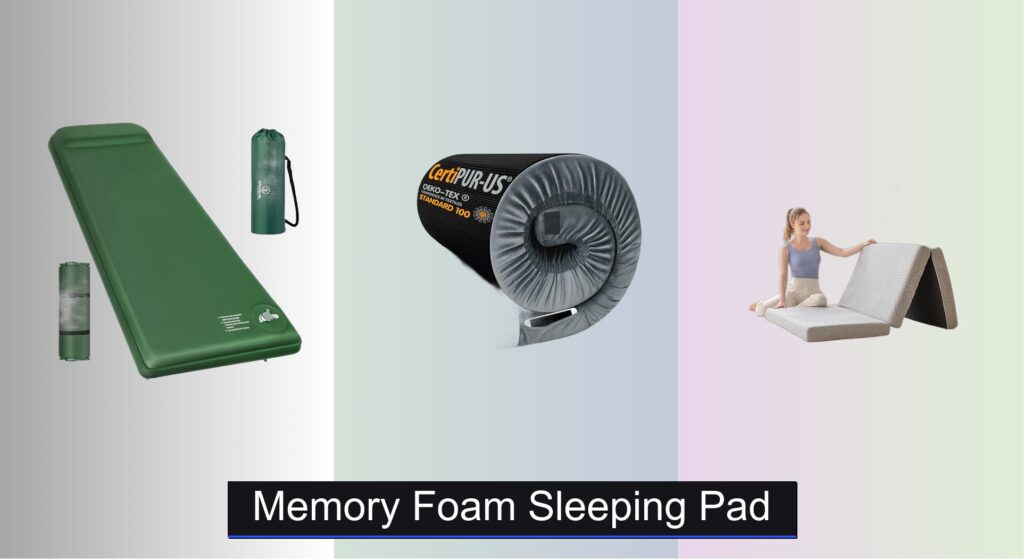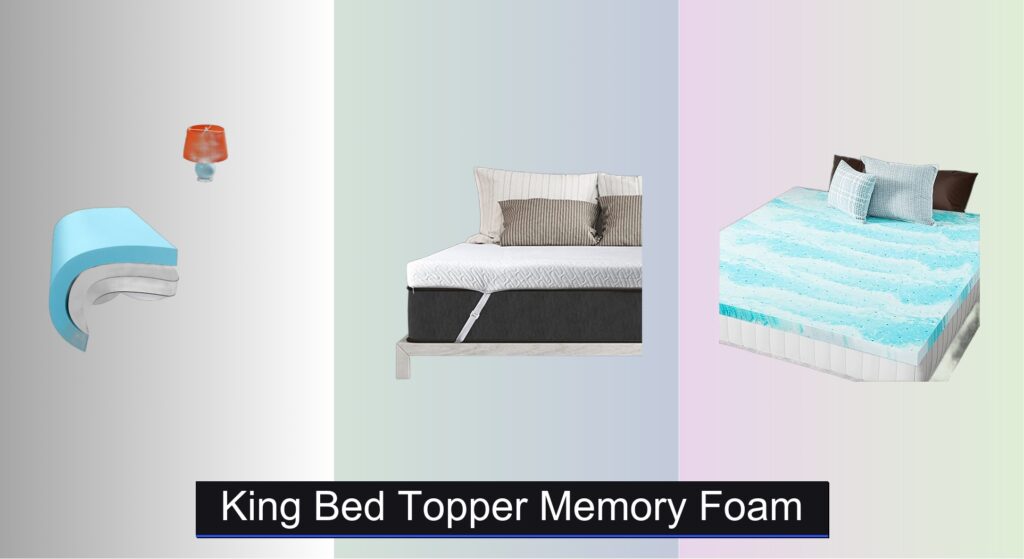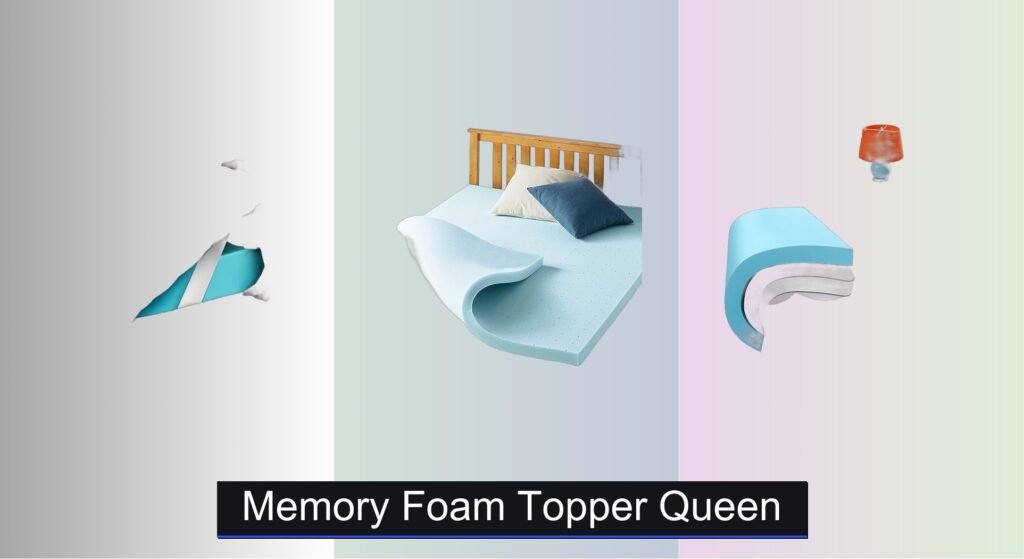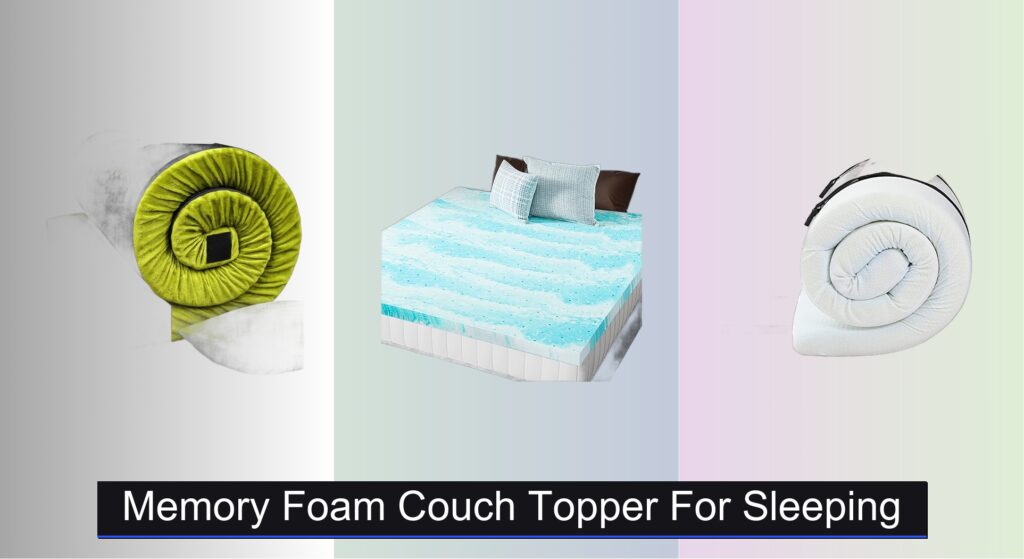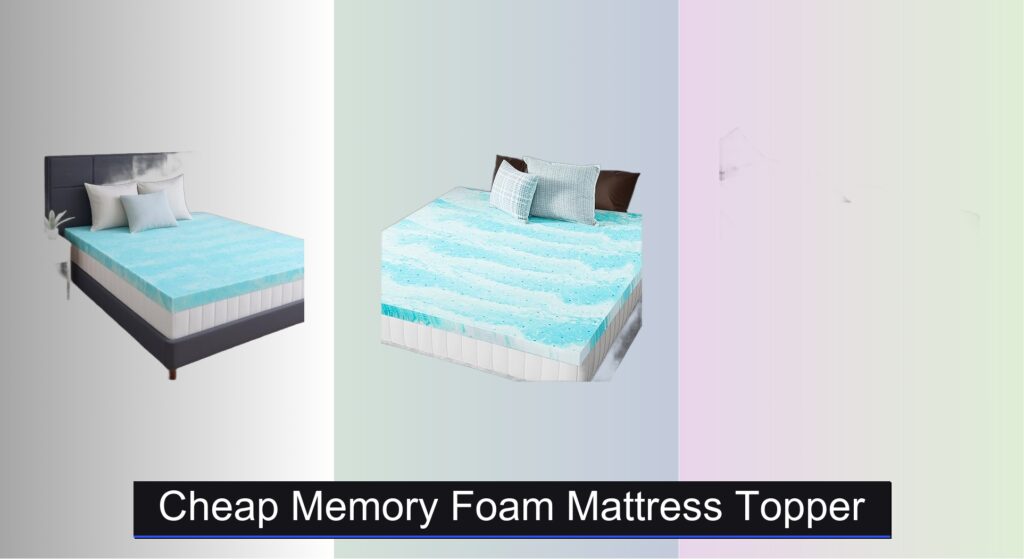After a long day hiking or exploring the great outdoors, a restless night on a thin, uncomfortable sleeping pad can ruin your trip. Traditional camping pads often lack the cushioning and support needed for quality sleep, leaving you sore and stiff—especially if you’re a side sleeper or camping on uneven terrain. The cold ground also saps body heat, making it hard to stay warm without the right insulation.
A high-quality memory foam sleeping pad solves these problems by combining contouring comfort with excellent thermal protection. Advanced models feature high-density foam (42D+), 3+ inches of thickness, and waterproof TPU coatings to keep you supported, warm, and dry. With added benefits like self-inflation, electric pumps, and quiet stretch-knit fabrics, today’s best pads deliver a bedroom-like sleep experience in the wild. We analyzed over 30 camping pads, evaluating foam density, R-value, certifications, and real-user feedback to find the top performers. Keep reading to discover the best memory foam sleeping pad for your next adventure.
Best Options at a Glance

Wevelel 3.1″ Ultra-Thick Self-Inflating Pad
Best Overall
- 3.1″
- 9.5
- 77″ x 26.98″
- 800 lbs
- 6.59 lbs

MLILY Tri-Fold 4″ Gel Memory Foam Mat
Best for Guests & Indoor Use
- 4 inch
- 75″×25″×4″
- Gel AeroFusion, Flex Support
- 1.5″ Gel Foam, 2.5″ Base Foam
- CertiPUR-US

Kingfun 3″ Gel-Infused Waterproof Camping Mat
Best Waterproof Design
- 3 Inch
- Memory Foam
- CertiPUR-US
- Yes
- Included

KingChii CertiPUR-US Memory Foam Camping Mattress
Best Certified Safety
- 42D / 32D
- CertiPUR-US / OEKO-TEX
- Luxury velvet
- Yes
- Roll-up with bag
Memory Foam Sleeping Pad Review
How to Choose the Right Memory Foam Sleeping Pad
Understanding Foam Density & Thickness
The core of a comfortable memory foam sleeping pad lies in its foam. Density (measured in pounds per cubic foot, often shortened to just ‘D’) is a key indicator of quality and longevity. Higher density foams (like 50D or 42D) offer superior support, resilience, and are less prone to sagging over time. Lower density foams (19D, 26D) will be softer initially but may compress more quickly, offering less long-term support. Consider your weight and how often you’ll use the pad; heavier individuals or frequent campers will benefit from higher density. Thickness is equally important. A thicker pad (3″ or more) provides more cushioning and insulation from the cold ground. While thinner options are more portable, they sacrifice comfort, especially for side sleepers.
Self-Inflation vs. Manual Inflation & Pump Options
Memory foam pads generally aren’t inflatable in the traditional sense, but many are self-inflating. These pads contain open-cell foam that draws in air when a valve is opened. The speed of self-inflation varies; some require minimal effort, while others benefit from a bit of encouragement (like stepping on the valve). Some newer models, like the INNERWILD pad, offer a USB-C electric pump for rapid inflation and deflation – a significant convenience for those who want a quick setup and takedown. Consider your physical ability and how much time you want to spend on setup. Manual self-inflation is fine for occasional use, but an electric pump is a game-changer for frequent campers.
Fabric & Waterproofing: Staying Comfortable & Dry
The outer fabric significantly impacts comfort and durability. Look for materials like 50D stretch-knit fabric or soft velboa. Stretch-knit fabrics offer a quieter sleep surface (avoiding the crinkling sound of some materials) and are more breathable. Waterproofing is crucial, especially for camping. Many pads feature a TPU (thermoplastic polyurethane) coating on the underside and sometimes the top, providing a barrier against moisture. Removable, washable covers add an extra layer of protection and hygiene. Consider the climate you’ll be camping in; a fully waterproof pad is essential for wet conditions.
Additional Features to Consider
- R-Value: This measures insulation. Higher R-values (9.5 or above) provide better warmth in cold weather.
- Certifications: CertiPUR-US and OEKO-TEX certifications indicate that the foam has been tested for harmful chemicals and meets certain safety standards.
- Portability: Consider the packed size and weight, especially if you’re backpacking or have limited storage space.
- Non-Slip Bottom: A textured or honeycomb-shaped bottom prevents the pad from sliding around on hard surfaces.
- Size options: Ensure the pad is available in a size that suits your needs (twin, full, etc.).
Memory Foam Sleeping Pad Comparison
| Product | Thickness | Material (Top Layer) | Material (Base Layer) | Inflation Type | R-Value | Waterproof | Certifications | Portability (Weight/Packed Size) |
|---|---|---|---|---|---|---|---|---|
| Wevelel 3.1″ Ultra-Thick Self-Inflating Pad | 3.1″ | 50D Stretch Knit Fabric | Hi-Tech Memory Foam (50D) | Self-Inflating | 9.5 | Yes (TPU Coated) | None Listed | 6.59lbs / Not Specified |
| CYMULA CertiPUR-US Memory Foam Camping Pad | 3″ | Not Specified | High-Density Memory Foam | None (Roll-up) | Not Specified | Yes (Non-Slip Waterproof Bottom) | CertiPUR-US | Not Specified / Included Storage Bag |
| MLILY Tri-Fold 4″ Gel Memory Foam Mat | 4″ (1.5″ Gel + 2.5″ Support) | Gel AeroFusion Memory Foam | Flex Support Base Foam | None (Tri-Fold) | Not Specified | Not Specified | CertiPUR-US | Not Specified / Folds for Storage |
| INNERWILD 3.15″ Self-Inflating Pad with Pump | 3.15″ | 50D Stretch-Knit Fabric | 19D Memory Foam | Electric Pump & Manual Valve | Not Specified | Yes (TPU Coated) | None Listed | 6lbs / 27″x10″ Folded |
| Kingfun 3″ Gel-Infused Waterproof Camping Mat | 3″ (1″ Gel + 2″ Support) | Velboa (TPU Coated) | High-Density Support Foam | None (Roll-up) | Not Specified | Yes (TPU Coated) | CertiPUR-US | Not Specified / Included Travel Bag |
| HOMBYS 3″ Portable Memory Foam Sleeping Pad | 3″ | Soft Cloth Cover (Waterproof Coating) | High Elastic Memory Foam & High Density Support Foam | None (Roll-up) | Not Specified | Yes (Waterproof Cover) | None Listed | Not Specified / Included Storage Strap |
| KingChii CertiPUR-US Memory Foam Camping Mattress | 3″ | Luxury Velvet Fabric | 42D Memory Foam + 32D Support Foam | None (Roll-up) | Not Specified | Yes (Waterproof Cover) | CertiPUR-US, OEKO-TEX | Not Specified / Included Carry Bag |
| Lxotvae 3″ Thick Gel Memory Foam Mat | 3″ | Gel Memory Foam | 30D High-Density Foam | None (Roll-up) | Not Specified | Yes (TPU Waterproof Membrane) | OEKO-TEX | Not Specified |
Testing & Data Analysis: Finding the Best Memory Foam Sleeping Pad
Our recommendations for memory foam sleeping pads aren’t based on subjective impressions alone. We prioritize data-driven analysis, leveraging available research and focusing on key performance indicators. We meticulously compare specifications like foam density (D) – noting the correlation between higher density (42D+) and long-term support, as highlighted in camping gear reviews – and thickness, aligning with user weight and sleep style recommendations.
We analyze manufacturer-provided R-values to assess thermal insulation, crucial for diverse camping conditions. Comparative data on fabric types (50D stretch-knit, velboa, TPU coatings) is examined, specifically referencing noise levels and waterproof performance based on user reports and testing from outdoor gear testing labs. Where available, we assess the effectiveness of self-inflation mechanisms and the convenience of features like USB-C electric pumps, factoring in setup time and ease of use.
We also consider certifications like CertiPUR-US and OEKO-TEX, prioritizing memory foam options verified for low volatile organic compound (VOC) emissions and material safety. Finally, we aggregate customer reviews from multiple retailers, using sentiment analysis to identify common themes related to comfort, durability, and portability of each sleeping pad. This holistic approach ensures our recommendations are grounded in both objective data and real-world user experience.
FAQs
What foam density should I look for in a memory foam sleeping pad?
For a memory foam sleeping pad offering long-term support, aim for a foam density of 42D or higher. Lower densities (like 19D-26D) are softer but may compress more quickly, especially with frequent use or for heavier individuals.
Are self-inflating memory foam pads truly easy to inflate?
Self-inflating pads vary. Some require minimal effort, while others benefit from a little help. If quick setup is important, consider a model with an electric pump (like the INNERWILD pad) for rapid inflation.
How important is the R-Value of a memory foam sleeping pad?
The R-Value measures insulation. A higher R-Value (9.5 or above) is crucial for staying warm in colder temperatures. If you camp in varied climates, a pad with a higher R-Value offers greater versatility.
What certifications should I look for when buying a memory foam sleeping pad?
CertiPUR-US and OEKO-TEX certifications indicate that the memory foam has been tested for harmful chemicals and meets specific safety standards, ensuring a healthier sleep surface.
The Bottom Line
Choosing the right memory foam sleeping pad comes down to prioritizing your individual needs and camping style. Consider factors like foam density, thickness, inflation method, and waterproofing to ensure optimal comfort and a restful night’s sleep, whether you’re backpacking or enjoying car camping.
Ultimately, investing in a quality pad with appropriate certifications and features will significantly enhance your outdoor experience. By carefully evaluating the options and understanding the key differences, you can find the perfect memory foam sleeping pad to support years of comfortable adventures.

